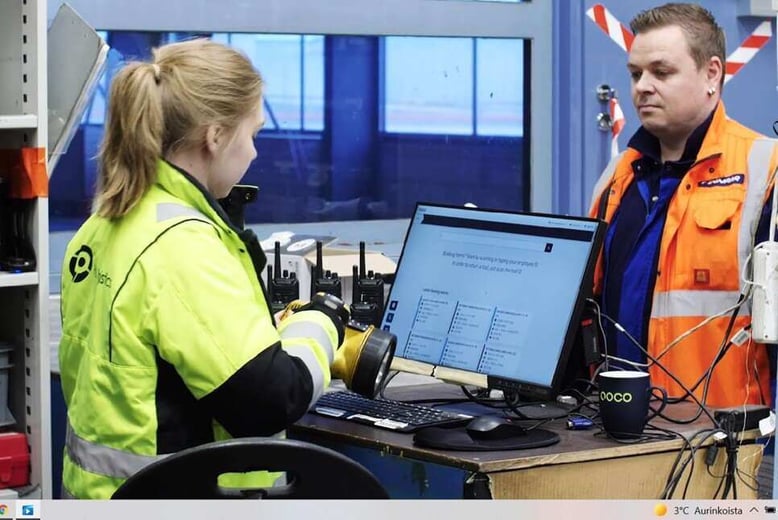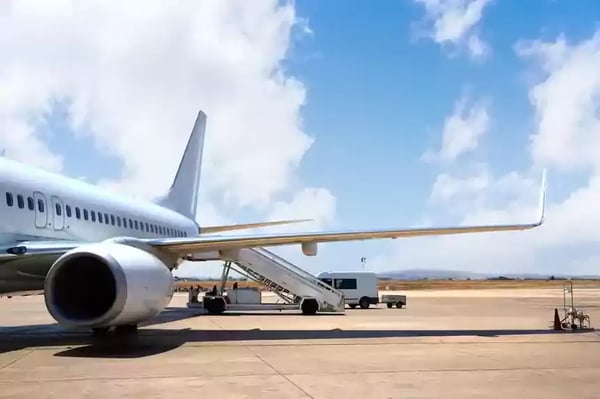Introduction to Aircraft Maintenance Tooling
It goes without saying that aircraft maintenance is a highly regulated and critical aspect of aviation, where safety and precision are paramount. Ensuring that aircraft are well-maintained and ready for flight is a complex task that relies heavily on the expertise of maintenance professionals and the quality of their tools. At QOCO Systems, we have a long experience of working with both airframe and engine MROs and know what is required and where bottlenecks tend to arise.
To learn more about the foundational role of MRO software in optimizing maintenance processes, take a look at our comprehensive guide on everything you need to know about MRO software.
In this blog, we will explore aircraft maintenance tooling, its benefits to tool managers, and the crucial responsibilities they hold in maintaining safety and compliance.
The role of aircraft maintenance tooling
Aircraft maintenance tooling refers to a specialized set of tools and equipment used by maintenance technicians to inspect, repair, and maintain aircraft. Tools range from basic hand tools like wrenches and screwdrivers to advanced equipment like diagnostic machines and precision measuring instruments. The role of aircraft maintenance tooling is crucial for ensuring the safety, reliability, and airworthiness of an aircraft, but it often doesn't receive enough attention. What is the business case for a tooling management software?
Different sorts of tooling
Basic Hand Tools: Used daily for fastening, panel removal, and minor tasks. Examples include wrenches, screwdrivers, pliers, and hammers. Proper calibration (e.g., torque wrenches) prevents damage from overtightening.
Precision Measuring Instruments: Verify tight tolerances on parts. Calipers, micrometers, and dial indicators check dimensions, runout, and alignment to detect wear or deviations.
Torque Tools: Apply exact tightening to fasteners, preventing loosening or overstressing. Torque wrenches and screwdrivers must be kept calibrated to ensure accuracy.
Power Tools: Pneumatic or electric drills, grinders, sanders, rivet guns, and impact wrenches speed up work. Strict adherence to manuals is crucial to avoid over-torquing or material damage.
Specialized Aircraft Tools: Include safety wire twisters, flush rivet sets, hose crimpers, cable tension meters, and engine-specific tools. Designed to reduce damage risk and improve accuracy on specialized systems.
Rigging Tools: Maintain correct alignment of control surfaces. Protractors, inclinometers, and cable tension gauges ensure proper deflection and help avoid handling issues.
Avionics and Electrical Test Equipment: Multimeters, oscilloscopes, circuit testers, and pitot-static test sets diagnose electronic systems, ensuring reliable instrumentation and communication.
Composite Repair Tools: Rollers, squeegees, and curing equipment for carbon fiber or fiberglass work. Ultrasonic inspection tools detect hidden flaws like delamination in composite structures.
Ground Support Equipment (GSE): Jacks, tow bars, tugs, and maintenance platforms enable safe lifting, moving, and access to aircraft, promoting efficient workflows while protecting technicians and equipment.
Personal Protective Equipment (PPE): Eye, hearing, and respiratory protection, along with gloves and fire-resistant clothing, safeguard personnel from physical and chemical hazards.
Role of tooling managers
Tool managers play a pivotal role in aircraft maintenance by overseeing the selection, maintenance, and distribution of tools. Here are some of the things they help with:
-
Efficiency and cost savings:
Properly maintained tools help streamline maintenance operations, reducing downtime and increasing efficiency. This translates to cost savings for airlines and operators. -
Enhanced safety:
High-quality tools that are well-maintained reduce the risk of accidents and errors during maintenance procedures. Tool managers are responsible for ensuring that tools meet safety standards. -
Regulatory compliance:
Compliance with aviation regulations, such as those set by the FAA and EASA, is paramount. Tool managers are responsible for ensuring that all tools are compliant with relevant regulations, preventing costly fines and penalties. -
Inventory management:
Managers are responsible for tracking tool inventory, ensuring tools are available, and preventing theft or loss.

Responsibilities of Tool Managers in Safety and Compliance
-
Tool inspection and maintenance:
Tool managers must establish a rigorous tool inspection and maintenance program. Regularly inspect tools for wear and damage, and promptly repair or replace any faulty tools. Proper maintenance of tools reduces the risk of accidents and ensures correct execution of maintenance procedures. -
Documentation:
Tool managers must maintain detailed records of tool inspections, repairs, and replacements. These records serve as evidence of compliance with safety and regulatory requirements. -
Training:
Tool managers should provide training to maintenance technicians on the proper use and care of tools. Technicians must be aware of safety protocols and regulatory requirements related to tool usage. -
Compliance with regulations:
Tool managers are responsible for staying up-to-date with aviation regulations and ensuring that all tools in their inventory comply with these regulations. This involves ensuring that tools meet specific airworthiness standards and calibrating them properly. -
Tool calibration:
Precision is crucial in aircraft maintenance, and many tools require regular calibration. Tool managers should establish a calibration schedule and ensure that tools are calibrated according to manufacturer recommendations.
Conclusion
In the aviation industry, tooling may not always be in the spotlight, but it is an essential element for ensuring safety and reliability. Tool managers play a crucial role in maintaining efficient maintenance procedures, complying with regulations, and ensuring overall safety. They achieve this by maintaining top-quality tools, enforcing strict inspection and maintenance programs, and training maintenance technicians. QOCO MROTools help in this process and is used by leading airlines across the world.
Tool managers make a significant contribution to the safety and airworthiness of aircraft. Given the high stakes in aviation, their responsibilities are crucial and deserving of praise.



 Jichen Lu
Jichen Lu
 If you are interested in knowing how you can improve your efficiency in maintenance operations, book a 30-minutes discovery call with us.
If you are interested in knowing how you can improve your efficiency in maintenance operations, book a 30-minutes discovery call with us..jpg?width=600&name=iStock-1393093359%20(1).jpg)

